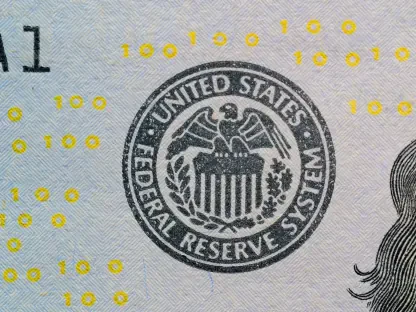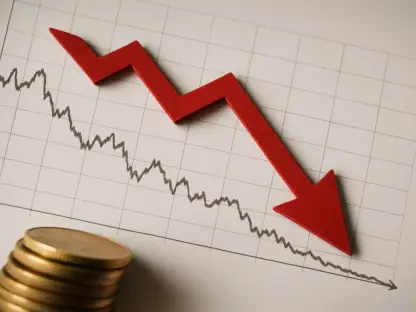Former President Trump’s imposition of unprecedented tariffs marked a tumultuous chapter in U.S. economic policy, catalyzing widespread concerns about the administration’s approach to navigating the trade war. The tariffs’ chaotic implementation and inconsistent communication generated significant uncertainty, prompting criticism from economists such as Heather Boushey, who underscored the severe lack of a coherent strategy. Trump’s erratic tariff strategy has emboldened fears about long-term ramifications, leaving various stakeholders pondering the future of U.S. economic stability.
Economic Uncertainty and Potential Harm
Contradictory Statements and Economic Instability
Boushey and other critics have pointed out that the Trump administration’s tariff strategy often seemed erratic, causing uncertainty about the administration’s ultimate objectives. The tariffs alternated between being framed as necessary for protecting U.S. manufacturing and generating middle-class jobs and as retaliatory measures against trade partners. This unpredictability has fostered a broader sense of economic instability, with both domestic and international markets left uncertain about future trade policies.
The inconsistency in communication has matter-of-factly spread uncertainty regarding whether agreements or negotiations with other countries were in progress. Moreover, this erratic stance undermined confidence among business leaders, investors, and consumers. Consequently, Boushey argues the lack of clarity in intent has undermined the potential benefits of the tariffs while magnifying their risks, thus subjecting the economy to severe fluctuations and instability during the period of their implementation.
Congressional Intervention and Bipartisan Challenges
Amidst the economic instability, the potential for Congressional intervention remains a crucial consideration. Senator Elizabeth Warren emphasized that Congress possesses the authority to roll back unfavorable tariffs, thus helping stabilize the economy. However, the success of such interventions relies heavily on achieving bipartisan support, particularly from Republican lawmakers who initially supported the tariff measures during the Trump presidency. This political dynamic has proven to be a significant barrier to effective legislative action.
Despite the pressing need for Congressional intervention, Boushey expressed skepticism about its likelihood, citing the current political climate as a major hurdle. The polarization and partisan divides in Congress make it challenging to muster the necessary consensus to enact meaningful changes to the tariff policies. Hence, the prospects of rolling back these tariffs and alleviating their adverse effects appear dim, placing further strain on both the legislative process and broader economic stability.
The Global and Domestic Economic Impact
Market Reactions and Administration’s Indifference
The tariffs have undeniably had a profound impact on both the global and domestic economies. Contrary to expectations that market downturns might prompt a reassessment of the tariff strategy, Trump appeared indifferent to fluctuations in stock markets and the looming threat of a recession. This unyielding stance has exacerbated the uncertainty and instability caused by the tariffs, further stressing an already fragile economic landscape. Investors and traders have found themselves navigating choppy waters with little assurance from the administration.
The indifference to market reactions has raised alarm among financial experts who warn that ignoring the signals from the stock markets and broader economic indicators could lead to severe long-term consequences. The administration’s focus on punitive tariffs without heeding the market’s response illustrates a disconnect that has amplified fears of a looming recession and prolonged financial instability. This atmosphere has dissuaded investments and hindered growth, stalling initiatives aimed at driving economic prosperity.
Undermining Foundations of Economic Growth
Compounding the negative impact of the tariffs, the Trump administration’s policies have further weakened institutions essential for creating high-quality jobs and fostering robust economic growth, such as the Department of Labor. By undermining the mechanisms that support workforce development and job quality, the administration effectively eroded the foundation needed for sustainable economic progress. This dual approach of imposing tariffs while weakening critical institutions has stifled potential avenues for economic revival.
Boushey and other economists argue that the repercussions of this approach reach beyond immediate economic fluctuations. By weakening key governmental bodies, the administration has sapped the long-term capacity to nurture and sustain economic progress. The erosion of labor standards and support structures has imposed additional burdens on both workers and employers, compounding the adverse effects of the tariffs and further constraining economic growth prospects.
Advocating for Urgent and Coherent Policy Responses
Concerns Over Long-Term Economic Impact
The consensus among many economic analysts and experts is an urgent need to address the severe implications of the Trump administration’s tariff policies. Boushey stresses that the lack of a clear, actionable plan has exacerbated concerns, leading to significant long-term economic damage. The persistent uncertainty has created an environment where markets remain volatile, and American workers face the prospect of ongoing economic hardship without coherent policy guidance.
Acknowledging the growing pressure for swift action, Boushey and others advocate for more strategic and informed policy responses. They emphasize that clear objectives and communication are crucial in guiding economic strategies that can mitigate the adverse impacts of the tariffs. Addressing these concerns necessitates a unified effort where policymakers prioritize stability and tangible outcomes over erratic measures, facilitating a more stable economic environment conducive to growth and recovery.
Prospects for Political and Economic Solutions
Looking forward, the potential for constructive political and economic solutions remains key to navigating the challenges imposed by the tariffs. Bipartisan cooperation in Congress, while challenging, is essential for reversing unfavorable policies and implementing measures that steer the economy toward stability and growth. Collaborative efforts must prioritize pragmatic solutions that resonate with the needs of both the markets and the workforce, promoting an environment of cohesive economic recovery.
Drawing from the lessons of the past, policymakers are urged to adopt approaches that balance short-term interventions with long-term strategy planning. Ensuring the effectiveness of these measures involves fostering open dialogue, leveraging expert insights, and focusing on sustainable policies that drive economic resilience. The urgency of these actions cannot be overstated; addressing the severe consequences of the tariff policies is paramount for restoring confidence and paving the way for a more secure economic future.
Charting a Path Forward
Former President Trump’s imposition of unprecedented tariffs marked a tumultuous period in U.S. economic policy, heightening widespread concerns about his administration’s approach to the trade war. The chaotic implementation of these tariffs and their inconsistent communication generated substantial uncertainty. Critics like Heather Boushey, a prominent economist, pointed out the severe lack of a coherent strategy in Trump’s tariff policy. This erratic approach not only caused immediate disruptions but also led to fears about long-term repercussions on the U.S. economy. Stakeholders ranging from business leaders to policymakers have been left pondering the future stability of U.S. economic growth and international trade relations. The randomness of Trump’s tariff decisions has raised alarms about the potential negative impact on various industries, prompting deeper discussions on the need for a more strategic and predictable economic policy. Long-term effects remain uncertain, but the episode has inevitably provoked ongoing debates about the best path forward for U.S. economic stability and global trade dynamics.









